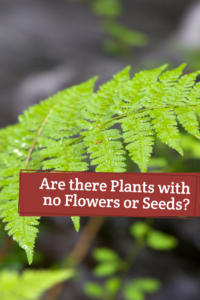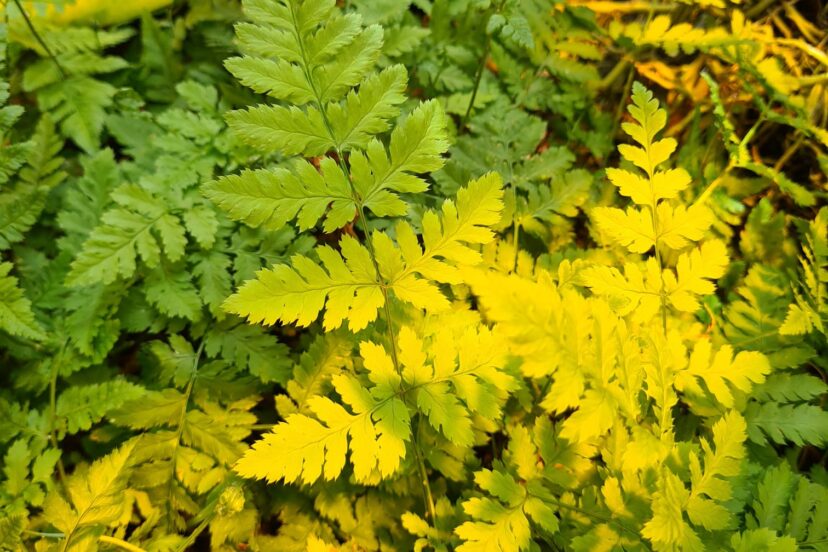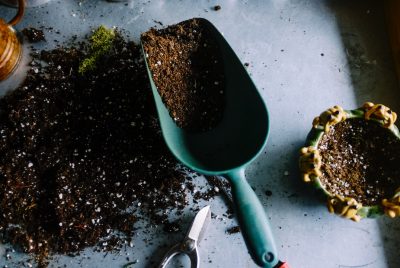Are there Plants with no Flowers or Seeds?
Hey there, fellow plant lovers! Have you ever wondered if there are plants out there that don’t have flowers or seeds? Well, I’m here to dive deep into this intriguing topic and shed some light on the wonderful world of non-flowering, seedless plants. It’s a bit of an uncharted territory in the realm of botany, but fear not—I’ve got you covered with all the interesting details, tips for cultivating these unique plants, and some green-thumb wisdom to boot.
Unveiling the Mystery of Flowerless, Seedless Plants
In the vast expanse of the plant kingdom, we’re accustomed to the beauty and wonder of flowering plants. However, there’s a whole category of plants that march to the beat of a different drum—plants without flowers or seeds. These intriguing botanical oddities may not be as glamorous as their flowering counterparts, but they definitely have their own charm and ecological importance.
Exploring the World of Non-Flowering Plants
1. Mosses
Mosses belong to the Bryophyte family, a group of non-vascular plants that lack specialized tissues for transporting water and nutrients. Despite their simple structure, mosses have managed to thrive for millions of years, adapting to diverse habitats ranging from forests to deserts.
Mosses have a unique life cycle that alternates between a gametophyte (sexual) and sporophyte (asexual) generation. The leafy, green structure we typically associate with mosses is the gametophyte stage, where male and female reproductive structures develop. The male structures release sperm, which require water to reach the female structures and fertilize eggs.
Upon fertilization, a sporophyte structure emerges, bearing a capsule at its tip. Within this capsule, spores develop. When the capsule matures, it releases spores into the environment, allowing the moss to disperse and colonize new areas.
2. Liverworts
Liverworts are another group of Bryophytes, existing in a wide array of shapes, sizes, and habitats. These plants are named for their resemblance to a liver’s lobes, as observed in some species. Just like mosses, liverworts lack vascular tissues, and they exhibit a similar alternation of generations between gametophyte and sporophyte stages.
Liverworts employ diverse reproductive strategies. Some species reproduce solely through asexual means, creating new plants through gemmae—small, multicellular structures that detach from the parent and develop into new individuals. Others produce sexual structures similar to those of mosses, with male and female organs for fertilization.
3. Ferns
Ferns are like the elegant dancers of the plant world, swaying with the breeze and gracing us with their lush fronds. Unlike flowering plants, ferns reproduce through spores as well. They’re excellent additions to shady corners of your garden, adding a touch of wild beauty to the landscape.
Ferns are members of the plant division Pteridophyta, a diverse group of vascular plants that reproduce via spores rather than seeds. With their intricate, feather-like fronds, ferns bring a touch of wild elegance to landscapes, making them popular choices for both indoor and outdoor cultivation.
One of the most fascinating aspects of ferns is their life cycle, which involves alternating between two distinct generations: the sporophyte and the gametophyte. The sporophyte, which is the larger and more recognizable phase, produces spores within structures called sporangia located on the undersides of fronds.
When spores are released and find suitable conditions, they germinate to give rise to the gametophyte generation. Gametophytes are much smaller and heart-shaped, often growing on damp surfaces. These structures produce eggs and sperm, which require moisture to fertilize and initiate the growth of a new sporophyte.
4. Horsetails
Horsetails, scientifically known as Equisetums, are living fossils that have been around for millions of years. Fossil evidence indicates that horsetails were much larger and more diverse in prehistoric times, dominating landscapes during the Carboniferous period. These unique plants reproduce through spores, and their hollow stems make a distinct rustling sound when brushed against. These plants are often found in damp habitats, where their resilience allows them to thrive in diverse ecosystems.
Like their ancestors, modern horsetails reproduce through spores rather than seeds. They have two types of spore-producing structures: the cone-like strobilus and the more inconspicuous terminal strobilus. The strobili release spores that can germinate and develop into gametophytes, which eventually lead to the formation of the next generation of horsetails.
Horsetails can also reproduce asexually through rhizomes—underground stems that send out shoots and roots. This form of propagation allows horsetails to colonize new areas and expand their territory.
5. Fern Allies
Apart from true ferns, there’s a group of plants known as fern allies. They share some characteristics with ferns while retaining their own distinct identities. Fern allies include various plant types, such as clubmosses (Lycopodiopsida), spikemosses (Selaginellales), and quillworts (Isoëtales). Despite their distinct appearances, they share common evolutionary traits, often reflecting adaptations to different ecological niches.
One of the defining characteristics of fern allies is their reproductive structures. Clubmosses and spikemosses, for instance, reproduce through spores contained in cone-like structures. Quillworts, on the other hand, produce spores within specialized structures that resemble quills.
Fern allies exhibit a range of growth habits. Clubmosses, with their upright stems and scale-like leaves, often resemble small conifers. Spikemosses have creeping stems with small leaves and often form dense mats on the ground. Quillworts are aquatic or semi-aquatic plants with grass-like leaves that grow either partially submerged or completely underwater.
Cultivating Non-Flowering, Seedless Plants: Tips and Tricks
Now that we’ve taken a stroll through this enchanting world of flowerless and seedless plants, you might be wondering how to bring these beauties into your own garden. Well, fret not, for I’ve got some handy tips and tricks up my sleeve to help you on your botanical journey.
1. Choose the Right Location Each of these plant types has its own preferences when it comes to light, moisture, and soil conditions. Mosses and liverworts thrive in damp, shaded areas, while ferns prefer indirect light and well-draining soil. Conifers, on the other hand, can vary widely in their requirements. Understanding their needs will set the stage for successful cultivation.
2. Soil Preparation Prepping the right soil is key to nurturing these non-flowering wonders. For mosses and liverworts, a mix of peat moss and perlite works wonders. Ferns thrive in soil rich in organic matter, so consider adding compost to the mix. Conifers often prefer slightly acidic soil with good drainage.
3. Watering Wisely While mosses and liverworts love moisture, be careful not to drown them. Keeping the soil consistently moist is important. Ferns appreciate regular watering, but avoid waterlogging the soil. Conifers generally prefer well-draining soil, so ensure that you’re not overwatering.
4. Creating Microhabitats Crafting little pockets of suitable habitat within your garden can work wonders. For mosses and liverworts, you can create a mini bog by lining a shallow depression with plastic and filling it with a mix of peat and sand. Ferns can thrive in a shady corner, bordered by rocks to retain moisture. Conifers might need some extra space, especially the larger varieties.
5. Patience and Observation Cultivating these unique plants requires a dash of patience and a sprinkle of observation. Regularly monitor their growth, adapt your care routine if needed, and enjoy the slow but rewarding progress.
Celebrate the Diversity of Greenery
In a world dominated by flowering plants, non-flowering, seedless plants offer us a refreshing glimpse into the diversity of nature. From the delicate charm of mosses to the grandeur of conifers, each of these plants has its own story to tell. So, whether you’re a seasoned gardener looking to diversify your collection or a curious beginner ready to embrace the unconventional, consider inviting these green wonders into your outdoor space.
FAQs About Non-Flowering, Seedless Plants
1. Can I grow moss indoors? Absolutely! You can create a miniature moss garden in a shallow container with a mix of peat and sand. Place it in a bright, indirect light spot, mist regularly, and enjoy your indoor moss haven.
2. Are ferns low-maintenance? Generally, ferns are relatively low-maintenance. They require consistent moisture and indirect light. Regularly misting the leaves can also mimic their natural humid environment.
3. Can I grow conifers in small gardens? Certainly! There are dwarf conifer varieties that are perfect for small gardens or even container gardening. They bring the charm of conifers without overwhelming the space.
4. Do non-flowering plants still attract wildlife? Yes, they do! Mosses and ferns, for instance, can provide shelter and nesting spots for insects and small animals. Conifers can host birds and provide a haven for squirrels.
5. Are there any non-flowering plants that are considered invasive? While some non-flowering plants like horsetails can be aggressive in certain conditions, they’re not typically considered invasive in the same way as some flowering plants. However, it’s always wise to research your local ecosystem before introducing new plants.

And there you have it, my fellow plant enthusiasts! The world of non-flowering, seedless plants is a mesmerizing one, full of unexpected beauty and uniqueness. So go ahead, let your garden reflect the diversity of nature and embark on a journey that’s both green and enchanting.




